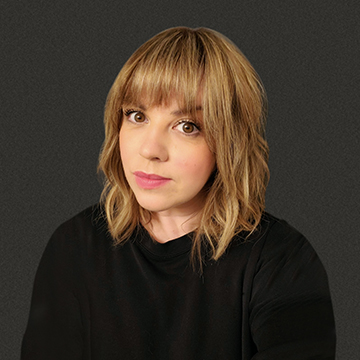When you walk into the Red River Heritage Fair you’re greeted by the slogan ‘Because Canada is cool!’ and judging by the passionate projects in the room, the testament is heartfelt. The long-running fair just celebrated its 30th year this May, and its first year back after a 3-year pandemic hiatus.
Over 100 students from across Manitoba joined their peers at the University of Winnipeg campus, to explore and celebrate Canada’s history.
“It’s really fun being back,” says Joanna Dawson, Director of Programs at Canada’s History Society, a national charitable organization that supports heritage fairs throughout Canada. “The committee stayed in touch during the pandemic, and it’s been exciting to get back together. It’s kind of like riding a bike – it’s all come back to us now. And the kids always have a great time.”
Themes Diverse as Canada Itself
That excitement was easy to spot as students from Grades 4-11 showed off their poster boards, dioramas, costumes, technology-based projects, and hands-on displays on themes as diverse as Canada itself. Topics ranged from the Halifax Explosion, the Underground Railroad, the Pig War, many notable Canadian figures, and of course, the history of Tim Hortons. The students also get to do a scavenger hunt and explore different workshops throughout the day such as a beading class.
“I have been sending my students to the Fair for the last ten years, and the projects are always amazing,” says Orysya Petryshyn who teaches history at Sisler High School in Winnipeg and also volunteers on the RRHF executive. “This year I actually had two students who are new immigrants from Ukraine and they entered their projects for the first time. They said it was a fabulous experience telling their stories.”
History Projects Cross Curricular Connections
Founded in 1993, Heritage Fairs are now held in every province and territory of Canada. Each year, approximately 60,000 students carry out research projects in the classroom. The judges panel at the Fair is comprised of representatives from the various partner organizations. The judges get a chance to talk to each student and ask questions and give advice. The judging is split into different categories and medals and prizes are awarded to top projects.
“The History projects really fit into the classroom because there are so many connections, not only for social studies, but a lot of cross curricular connections as well,” says Dawson. “The students are doing their own research, they’re asking questions, they’re evaluating sources and then they have to communicate their learning. It involves public speaking, putting together information in a display, and it’s a really rewarding experience for them.”
Equally rewarding for the students is a chance to network and meet with peers from other schools. “They’ve probably worked on these projects for two or three months and then they get to come and leave school and spend a day at a university and see what other kids are doing, and learn from each other,” says Dawson.
Seeing History Applied in Real Life
Petryshyn says her students enjoyed the chance to interact with all the exhibits and the people running them. “I think this is the best chance for students to learn history. They see history is not just sitting in the classroom and writing essays. Here they see it applied in real life.” This year Petryshyn invited the minister of education to speak to the crowd, as well as the premier who sent a video greeting. During the lunch hour the participants were treated to a performance and master class by Anastasiia Nazarenko, a talented circus performer who came from Zaporizhzhia, Ukraine. She arrived with her mother in Canada, escaping the War in Ukraine and is currently Petryshyn’s student at Sisler.
The volunteer-run fair relies on sponsors like Canada’s History Society and partnerships from Canadian-based museums which provide prizes and set up information booths for students. Winners of the fair get to participate in Canada’s History Society’s Young Citizens program and make a video about their heritage project to share with the world for a chance to win a $500 RESP prize.
“I think the biggest challenge with the fair is that sometimes new teachers aren’t aware of it,” says Dawson. “And it can seem a bit intimidating, or be seen as an extra project and they’re not sure how to incorporate it into their classroom. I think the first step is always to come see the fair because it’s so exciting. You really get a sense of how fun and engaging the day is, and how much learning is going on.”
MTS PD Day Session Coming this October
Petryshyn says she’s going to hold an MTS PD Day session at MSSTA this October, to talk to other teachers about the Heritage Fair and how it can benefit their classrooms. “History is a priority for any country, especially one of the best countries like Canada,” she says.
“I think this event is tremendous.”
For resources on teaching Canadian history and teacher tips visit https://www.canadashistory.ca/education/classroom-resources/teachers-tips, https://www.canadashistory.ca/education/heritage-fairs-and-young-citizens and https://www.redriverheritage.ca/.
– Originally published in the Spring 2023 issue of the MB Teacher
Read More MB Teacher Features Here!

Matea Tuhtar is a writer/photographer for the MB Teacher magazine and the Media Communications Specialist for The Manitoba Teachers’ Society.
